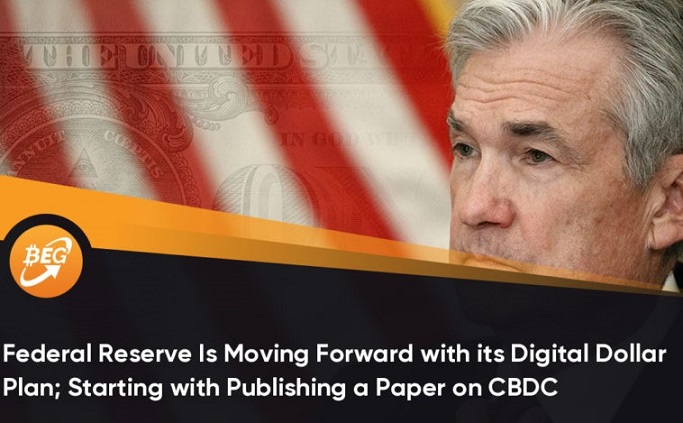The Federal Reserve is moving forward with its digital dollar plan; Start by publishing an article on the CBDC
Speaking of the potential of stablecoins to improve the payments system, President Jerome Powell said they “also carry potential risks” to its users and the financial system as a whole.
The Federal Reserve might be relatively slow in its planning for the digital dollar, but it is surely taking steps in that direction.
The latest move concerns the central bank’s planning to publish an article this summer on the “possibility of issuing” the central bank’s digital currency.
President Jerome Powell said the Fed had “carefully monitored and adapted” these innovations. Powell said in a video message accompanying the announcement:
“The efficient functioning of our economy requires that people trust not only the dollar, but also the payment networks, banks and other payment service providers that keep money flowing every day.”
“Our goal is to ensure a safe and efficient payment system that offers broad benefits to American households and businesses while fostering innovation.”
The Fed has been exploring the potential benefits and risks of CBDCs from different angles for several years, Powell said, adding that the focus is on how a CBDC could improve the domestic payments system and that it serves as a complement, and not the replacement of currency and the current digital forms of the dollar by the private sector.
Powell has repeatedly reiterated that instead of following others, like China leading the CBDC race, they would be cautious, giving things right instead of quickly taking on more importance.
According to David Treat, blockchain practice leader for Accenture, who is leading a public-private CBDC research initiative, it will take around four to five years to get it right.
Powell referred to the growing popularity of cryptos like Bitcoin but argued that they remain inefficient payment mechanisms.
When it comes to stablecoins, they have the potential to improve payment efficiency, speed up settlement flows, and reduce end-user costs, but they also “carry potential risks for these users. and the financial system as a whole, ”the transcript reads.
According to him, these technological advances offer new possibilities for central banks or a CBDC intended for public use.
“We commit to the Federal Reserve hearing a wide range of voices on this important issue before making any decisions on whether and how to move forward with the US CBDC, taking into account the risks and opportunities. wider than it could offer, ”said Powell. “The document represents the start of what will be a thoughtful and deliberative process.”

